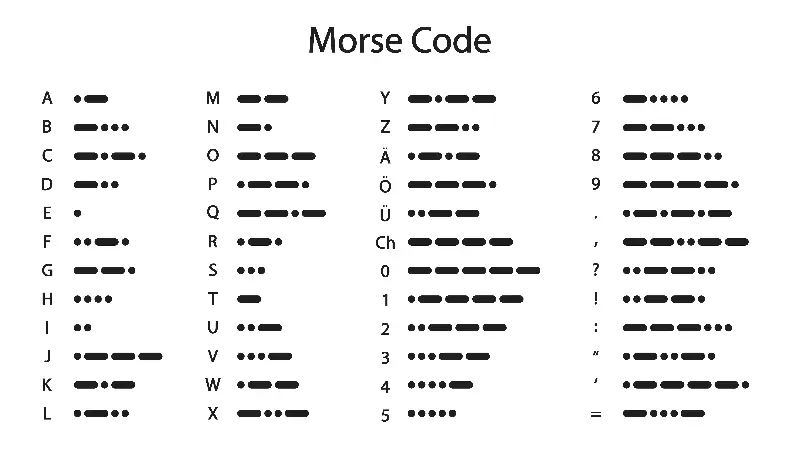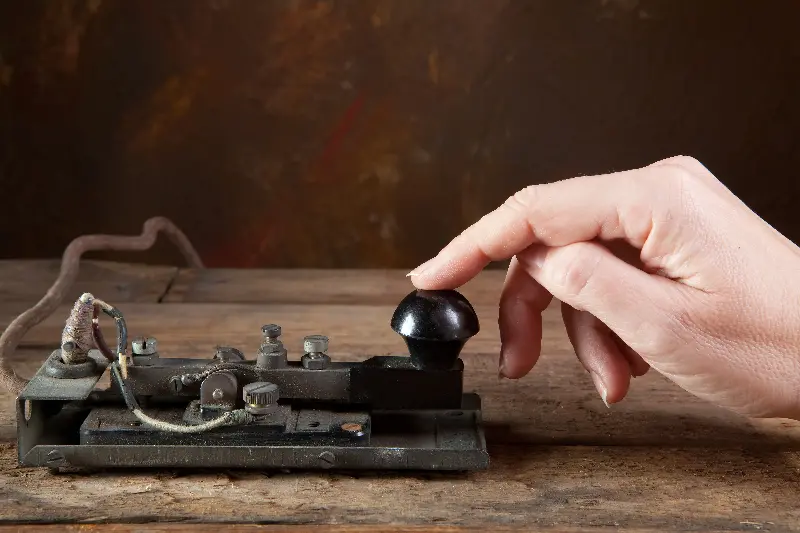When we think of modern communication, it’s easy to imagine instant messages, video calls, and email. Yet, long before our phones began buzzing with notifications, a series of dots and dashes revolutionised global connection. Morse code, a system older than the telephone or the internet, has travelled a remarkable path from the desperate emergencies of shipwreck survivors to present-day enthusiasts tapping out messages across continents. Its resilience and charm have made it both a technological stepping stone and a cherished cultural symbol.

Birth Of A Communication Revolution
The creation of morse code in the 1830s can be credited to American artist and inventor Samuel Morse and his colleagues, particularly Alfred Vail. Inspired by the idea of sending messages over telegraph wires, Morse developed a way to represent the entire alphabet using a simple system of long and short signals, known as dashes and dots. The logic was beautifully straightforward. Each letter and number was assigned a unique combination—like ‘S’ as three dots and ‘O’ as three dashes, forming the legendary SOS distress signal.
First demonstrated publicly in 1844, Morse’s message, “What hath God wrought,” travelled from Washington, DC, to Baltimore, ushering in a new era. Suddenly, distance shrank, and news that once took days or weeks to arrive zipped down wires in minutes. The world was on the cusp of instant communication.
From Railways To Rescue Missions
It didn’t take long for morse code to leap from the telegraph office to pressrooms, business hubs, and railway stations. For railways, Morse’s code was a revelation. Train dispatchers could warn of danger, schedule arrivals, and avoid catastrophic accidents. Journalists used it to file news stories across continents, sometimes at the speed of a breaking headline.
But perhaps the code’s most heroic chapter played out at sea. With the advent of wireless radio in the early 20th century, ships equipped with Marconi’s radio transmitters could send morse code messages to land. It saved countless lives. The “SOS” distress call, introduced in 1906, became synonymous with hope amid disaster. The tragic sinking of the RMS Titanic in 1912 was broadcast in frantic dots and dashes, enabling nearby ships to rush to the scene and save hundreds.
A Global Language Beyond Borders
One astonishing fact is that morse code quickly bridged language divides. Because it is based on simple, universal signals, it allowed speakers of different dialects and even non-English speakers to understand each other. Its compact nature meant messages weren’t just fast—they were often more secure, especially in wartime.
During both World Wars, morse code was a key tool of military strategy. Soldiers and spies relayed vital positions, while resistance movements tapped out codes under the noses of occupying forces. It was the ultimate secret language, understood only by those trained to decipher the rapid-fire pulses.
Social Impact And Enduring Legacy
Morse code didn’t just change how we sent messages—it transformed society. By making communication instant, it knit societies closer, fuelled economic growth, and even influenced art, literature, and music. Authors used morse as a metaphor for connection and isolation. In some cultures, learning morse code became a symbol of intelligence or adventure, adding a dash of romance to the already mysterious world of code-breakers and secret agents.
After World War II, advances like the telephone and later, digital communications, gradually ushered morse out of the mainstream. Yet, its legacy endures in both poignant and surprising ways. It remained the international standard for maritime distress signals until 1999. Even today, rescue beacons and radio amateurs use morse for long-distance, low-bandwidth communication when other methods fail. Its unparalleled efficiency—requiring only minimal equipment and electricity—has kept it alive at the fringes of technology.

Modern Rediscovery And Cultural Resonance
Far from fading away, morse code enjoys a surprising renaissance in the digital age. Amateur radio, known affectionately as “ham radio,” has seen a revival as enthusiasts from teenagers to retirees connect with others around the world by tapping keys and listening for beeps. For many, it’s more than a hobby—it’s a way to preserve a language that once united nations and saved lives.
Perhaps most fascinating is how morse code has found its way into surprising corners of pop culture. From secret tattoos to beeping ringtones and even fashion, the iconic dot-dash pattern appears as an emblem of individuality and nostalgia. It’s a reminder that even in a world of lightning-fast digital noise, the simplest forms of communication can carry the deepest meaning.
Why Morse Still Matters
What began as a technical solution nearly two hundred years ago has stood the test of time, evolving from an industrial marvel to a symbol of human ingenuity and resilience. Morse code’s journey from lifesaving messages to modern-day connectivity speaks to our enduring desire to reach out and be understood—no matter the distance or the era.
Today, the dots and dashes of morse code connect a global community, honouring a legacy of bravery and innovation. Whether spelled out in the static of a radio or stitched into a sleeve, it invites every generation to discover the power of simple connection. As the world grows ever noisier, perhaps it’s comforting to know that sometimes, a few beeps in the dark can still mean hope, courage, and a shared language stronger than words.
